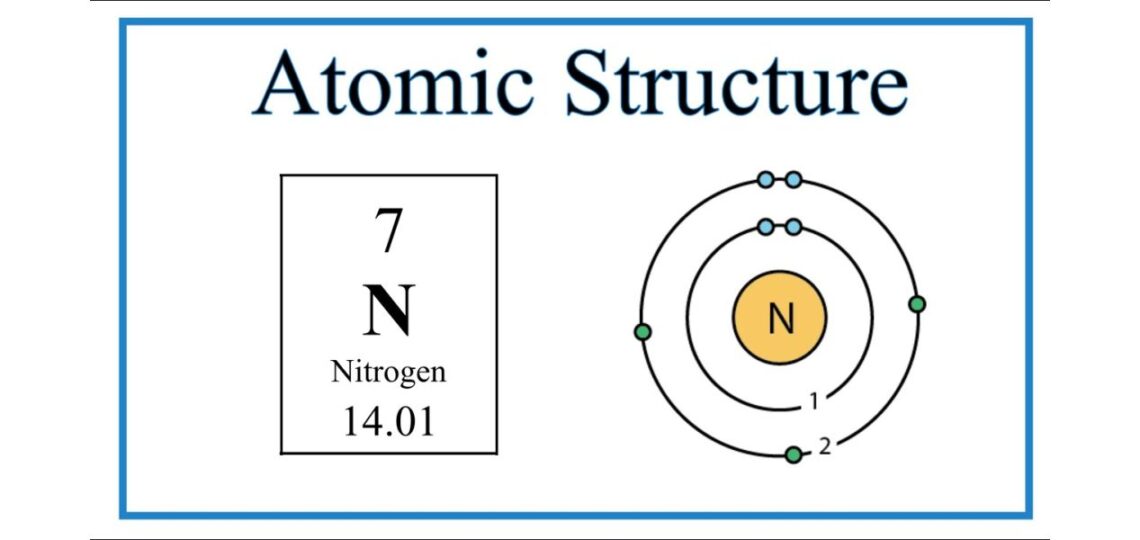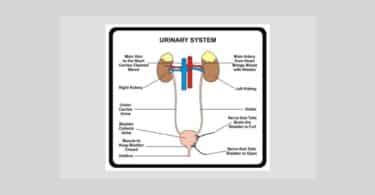Nitrogen is an abundant element in our world, and has been described as “schizophrenic” in character. Why schizophrenic? It’s in every breath we take, an essential component of proteins, and it helps plants to grow. And yet nitrogen can also be found in the most powerful explosives–e.g., nitroglycerine, TNT, and fertilizer bombs.
This polarity is an important help to understanding the nitrate remedies. Nitrogen in the air we breathe exists in the benign form N2–two molecules of nitrogen tightly bound by a triple bond. In this form, nitrogen is “free to roam”, not connected to other molecules which might connect it to earth. With the freedom to roam, there are no boundaries, no confinements, no entrapments.
When the N2 molecule is broken apart by lightning, nitrogen-fixating bacteria, or other chemical processes, the single nitrogen molecule can bond with oxygen, creating a nitrate (NO3), or in homeopathic language, “nitricum”. One can think of the nitrogen in NO3 as “trapped” and looking to escape from the oxygens, its only hope for “freedom” coming with the opportunity to bond again with another nitrogen molecule and form N2.
When a truckload of ammonia nitrate was used in a bombing in Oklahoma City, the nitrogen from both the ammonia and nitrate was ‘re-united’ as N2 and a huge charge of explosive energy was released. Return to the N2 state created a violent, unexpected, out of control crisis. So while nitrogen is “trapped” in its nitricum form, the return to “freedom” can be marked by explosive chaos.
Desire for freedom vs. fear of losing control is a polarity which runs through the different nitricum rubrics, and of key importance in recognizing a nitricum remedy:
Fear of losing control, and the corresponding desire for control over the immediate situation, is expressed through the following rubrics: anticipatory anxiety, fear of impending disease, punctuality, compulsiveness, ritualism, superstition, fear of high and open spaces (“too free–no boundaries”), and being obstinate/headstrong in order to maintain control in a “crisis” situation.
Desire for freedom is expressed through fear of narrow spaces, fear in a crowd, desire to escape, impulsiveness and impulse to jump from a height, loquacity, and obstinacy/headstrong (to avoid being controlled by the immediate situation).
We could say that nitrogen is “happy” in its free N2 state, and “unhappy” in the trapped state of nitrate, NO3, but this is not entirely true. Neither state is completely satisfactory–complete freedom with no boundaries equates to a lack of control, but complete control by the circumstances creates a sense of panic and a desire to escape. One can often find a history of unpredictable chaos and explosive anger in the nitricum individual’s childhood.
It’s easy to see why the nitricums can be confused with other polychrests: the fears can sometimes look like Phosphorus, the insecurities like Arsenicum, and the sense of chaos like Carcinosin. However, Phosphorus fears tend to be more “global” than relating only to control, Arsenicum fastidiousness is more complete than relating to a crisis, and the Carcinosin chaos includes suppression of one’s self not seen with nitricums.
Apart from nitricums, other common nitrogen remedies include the Ammonias (NH3 or NH4) and Nitric acid (HNO3). Neither of these remedies is very happy! Imagine being in an ammonia state: a nitrogen “tied down” by 3 or 4 hydrogen molecules, seemingly unable to be rid of those ties. In human terms, we can think of this as an unpleasant and unhappy condition with an aversion to further connection.
The ammonia influence can be seen in one’s reaction to smelling salts– the salts release ammonia gas which irritates the nasal mucosa, causing one to abruptly pull away from the noxious odor. Homeopathic ammonia seems to radiate the same energy to others: there’s grudge-holding, sadness with an aversion to company, and a negative association with others because of the “imposition” they pose. (Who wants to stay exposed to that?!) Although sometimes compared to natrums, the aversion to company in Natrum tends to occur through the desire to protect oneself from further hurt after a break in relationship, even though deep down the desire for connection remains.
Nitric acid (HNO3) can in some ways be viewed as a cross between the nitricums and ammonias. There’s “anxiety as if he were engaged in a lawsuit”, grudge-holding, hypochondriasis with fear of death, and fear of evil. Acid states in general imply a state of relative depletion, and nitric acid can be found in states where the person has “collapsed” after the strain of responding to repeated crises (actual or perceived).
By becoming familiar with the nitricum influence, one can begin to use it in situations apart from Argentum nitricum. Baryta nitricum (“cannot handle things anymore, overwhelmed by stress”), Ferrum nitricum (diarrhea from excitement, emotions) Kali nitricum (“punctuality, full of cares and worries”) and Natrum nitricum (“capriciousness, cannot handle things anymore, overwhelmed by stress) are other Nitricum possibilities. One would expect the above pictures to be distinguished by their respective well-known themes: Baryta (delusion small, laughed at); Ferrum (pertinacity); Kali (family, structure, rules); and Natrum (closed hurt, desire for relationship). Calcarea nitricum would include the fear of one’s condition being observed, and Magnesium nitricum would hold a great deal of tension related to expression of conflict.
Case history:
36 year old male seen 8/06
“My asthma is mostly under control; it’s worse in the allergy season. I have some pre-arthritis; it’s worse on the right side and in my hand and hip.
I have a lot of anger issues–I tend to explode. It sometimes happens really fast. Sometimes it builds and builds–it’s pent up. It rolls inside– I dwell on it. I’ll build it up way out of proportion. It’s like a core of anger that’s in there. It’s like I don’t have a chance to stop it. It sometimes doesn’t matter how much I yell; I’ll still feel it inside.
It’s like an explosion–everything is ready to smash through that tiny hole, wanting any excuse to come screaming out. There are times where I want to put my fist through the wall.
I get very stressed trying to get out the door. I like order–‘This is the way things are’! I get angry with any little thing that strikes me as not the way it should be.
My initial response to a person is ‘I don’t like you’, or even hatred. I’m distrustful and negative. I have recurrent dreams of falling from a high place–I’m inhaling from fear–I tense up. Low ceilings make me feel closed in. I don’t like consolation.
I grew up with my parents fighting constantly. It was nasty, crazy fighting–my mom would take it to extremes and smash things. I don’t like my parents. I hate them but I love them. I’m not going to forgive my mom.
I’m not the friendly type. It takes me time to warm up to people. If I don’t like someone, I can be rude and unapologetic. Once you’re on my sh*t list, it will take a long time to get off.”
In the above history, we see a childhood history of repeated episodes of explosive violence. Now the client desires a sense of order and control– ‘any little thing that strikes me as not the way it should be’; ‘this is the way things are’; and ‘I get very stressed trying to ‘get out the door’ (hurry to arrive at the appointed time). He also expresses discomfort with narrow places and has fearful dreams of falling from a height.
He says ‘I’m not the friendly type; ‘I don’t like you’; ‘I’m not going to forgive’. He’s negative and distrustful.
He also says ‘I tend to explode’, ‘I don’t have a chance to stop it’, and ‘There are times where I want to put my fist through a wall’.
Interpreting the history through the above themes, we can see nitricum and ammonium themes, as well as the interaction of these two energies as expressed in our material world.
Remedy: Ammonium nitricum 200C
Phone follow-up 2 months later: “I’m able to stop and think more easily instead of just exploding. Not everything has to be the way I want it. I’m feeling more positive, not so angry; I’m not yelling at the kids for every little thing. I have better energy and sleep.”
The client has continued to do well with periodic (approx. every 3-6 month) repeats of Amm-nit 200C to the present time. Just prior to this article he stated “The remedy helps to slow things down. It’s easier to notice when the (inner) tension is starting to build. I’m not exploding like I did in the past.” His wife stated: “The difference between now and prior to this remedy is that we can talk about when I think his reaction is out of proportion to the situation–we can have a reasonable conversation and not a fight. He can walk away from the situation and assess his reaction.
He ‘comes down’ from being angry relatively quickly and seems to achieve internal resolution — he doesn’t hold on to his anger and nurture it the way he used to. A situation earlier in the day doesn’t seem to smolder, just waiting for a spark to bring it back to the surface. Instead, individual conflicts seem to have a start and end.”
To conclude, a good start to understanding the homeopathic influence of nitrogen includes distinguishing the differences between Argentum nitricum/metallicum and Kali nitricum/carbonicum, as well as studying Glonoinum (nitroglycerin–“delusion objects are in disorder”). From there, one can begin to use the nitricum component in conjunction with Baryta, Natrum, etc. The relationship of nitricum remedies to Nitric acid and Ammonias will begin to open up, and remedy states such as Nitrous oxide and Nitromuriatic acidum will be easier to recognize. By using the firm foundation of more familiar remedies, one can begin to probe the incredible healing potentials of all nitrogen remedies.
# # #
David A. Johnson CCH, RSHom (NA) is a certified classical homeopath and professional member of the North American Society of Homeopaths. He completed his homeopathic training at the International Foundation for Homeopathy and the Northwestern Academy of Homeopathy. He taught clinical medicine at the University of Wisconsin and Augsburg College Physician Assistant Programs, and is an instructor at the Northwestern Academy of Homeopathy in Minneapolis. E-mail [email protected].
Visit his website at:





I really like the way you describe the remedies. There is calmness and insight that lets you comprehend what is what. Thank you
Do you take clients? How much is the initial consultation fee?
Very extensive study and really apt explanation sir. In future when I will prescribe nitrogen remedies will surely message you with results. GRATITUDE SIR.